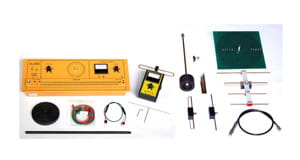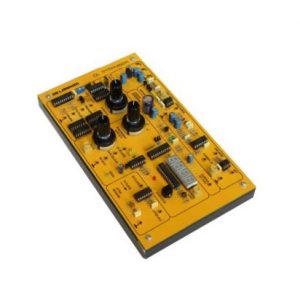In telecommunications, a transmission system is a system that transmits a signal from one place to another and the signal can be electrical, optical or radio signal. Some transmission systems contain also multipliers (to amplify the signal prior to re-transmission) and/or regenerators (to reconstruct and re-shape the coded message before re-transmission).
An example of common transmission system that people use everyday is the mobile network.
The De Lorenzo’s board system is composed of:
1) analogue signal transmission and processing that deal with analogue modulation/demodulation and computing techniques;
2) digital modulation/demodulation and signal transmission that deal with the most common techniques and the operating principles of digital signals;
3) optical transmission to study the principles of the communication (analogue and digital) through optical fibers (ST or POF type);
4) transmission line (simulated by RLC components) to test the propagation of electrical signal with loads;
5) optoelectronics to study the characteristics of the electronic devices that source, detect and control light, usually considered a sub-field of photonics;
6) cellular telephony that deals with basic operations, complete with components (keypad, display, microphone, loudspeaker, DSP and battery charger) to simulate a mobile phone.
All the above systems include faults simulation that can be introduced manually or via software. In this category, there are also available two important trainers, antenna and microwave.
The first designed to introduce students to the comprehension of the antennas operation mode and the second to experiment with the microwave components as well as to study the aspects of wave propagation. They are recommended for high schools and first years of university.













